For the Love of Red Wolves
For the Love of Red Wolves
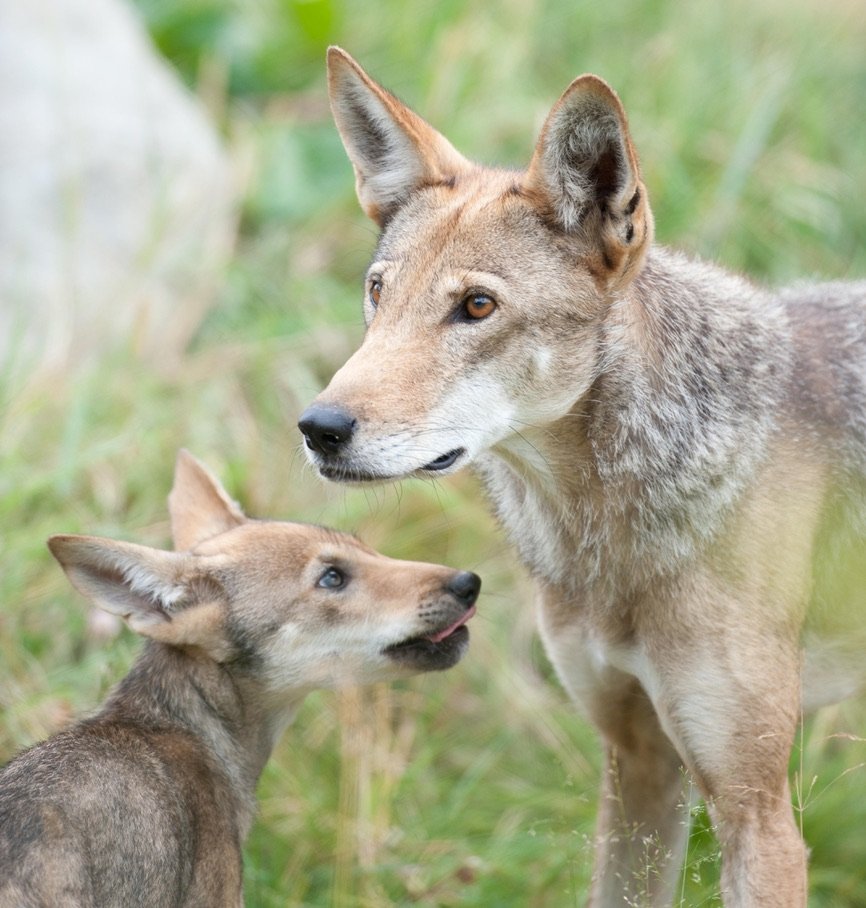
Red wolves are the most endangered wild animal in the US. Photo: Point Defiance Zoo & Aquarium
Let’s start with a question. What is the most endangered wild animal in the US?
- Black-footed ferret
- Eastern hellbender
- Gray bat
- Red wolf

Endangered red wolf pups playing. Photo: Katie Cotterill/ Point Defiance Zoo & Aquarium.
If your pick is the critically endangered red wolf, you are right! And of course, the photos might have given you a clue! So what makes an animal endangered?
Well, let’s start at the beginning. Any animal or plant that is so rare it might go extinct is considered endangered. And going extinct means it is gone forever. It ceases to exist. Pretty scary since once it is gone, it can’t be brought back. Except maybe by cloning but that is a strange story for another day.
With less than 20 endangered red wolves left in the wild, they are on the brink of extinction. But the promising thing? Endangered also means there is hope of saving them.
And we need your help! But why should you care? Let’s find out.
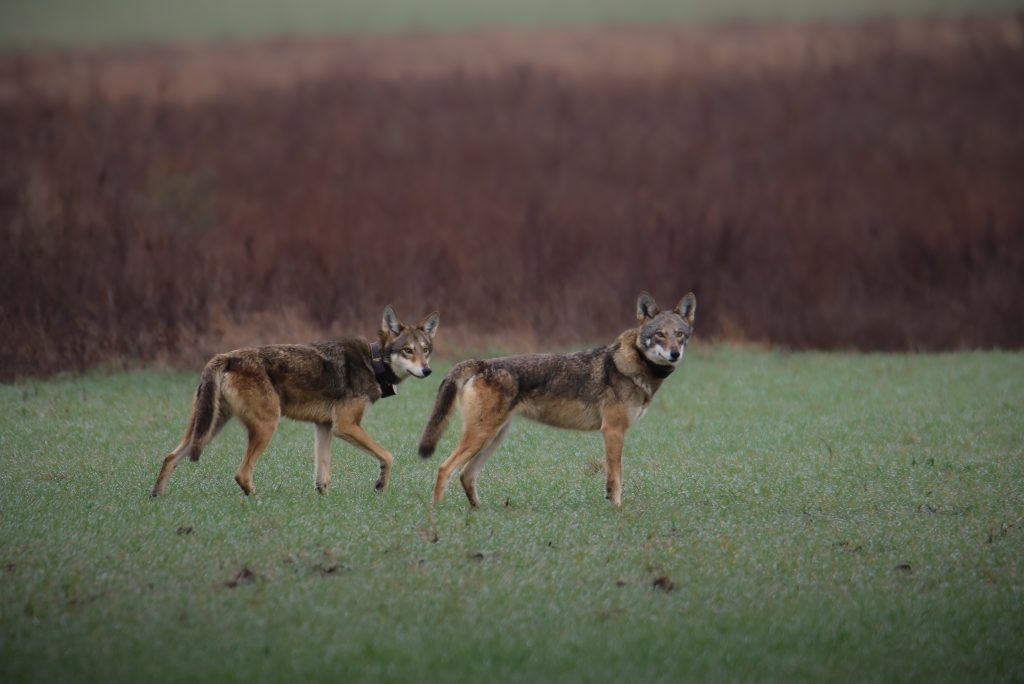
Red wolves generally mate for life. Photo: Robert Ondrish
We fell in love with red wolves at the NC Zoo. It was love at first sight! Just like Dale & me. Some of you know our story of getting engaged in 8 days which you can read about in our blog “Falling in Love“. But I digress.
One of the most endearing things to us about red wolves is they generally mate for life. When you think about only 3-5% of all mammals mate for life, these wolves are pretty remarkable.
And not only do they generally mate for life, but the male & female care for their pups together. Again, a mere 5-10 % of father mammals help care for their offspring. Wow, I had no idea. Now you are starting to see why our endangered red wolves are so special! They are outstanding, caring parents who both take on the responsibility of pup rearing.
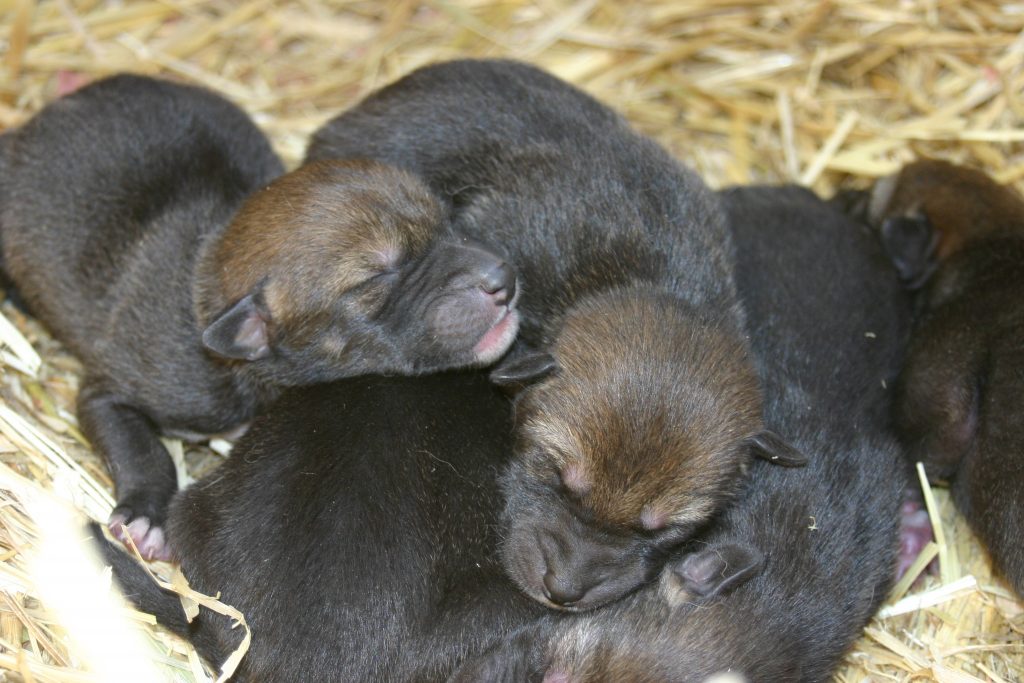
Newborn red wolf pups are born blind and gain their eyesight after about 2 weeks. Photo: WNC Nature Center
Red wolves have such a challenging time increasing their populations because they only give birth once a year in the spring. Puppy litters range from 2 to 8, with only about 50% of the pups surviving in the wild until the age of one.
But once born, the male brings food to the mom while she is nursing and caring for the pups. The newborns are blind and completely helpless until about 2 weeks old. After 3 weeks, the pups will start exploring their surroundings. And while it sure is tough being a pup, especially if born in the wild, they love to play, horse around with each other and generally annoy their mom & dad.
For the Love of Red Wolves
And to see why we love these magnificent underdogs, watch our newly released film (just 4 minutes long) with never before seen footage of wild pups born in the Spring of 2022. Be prepared to have your heart melted!
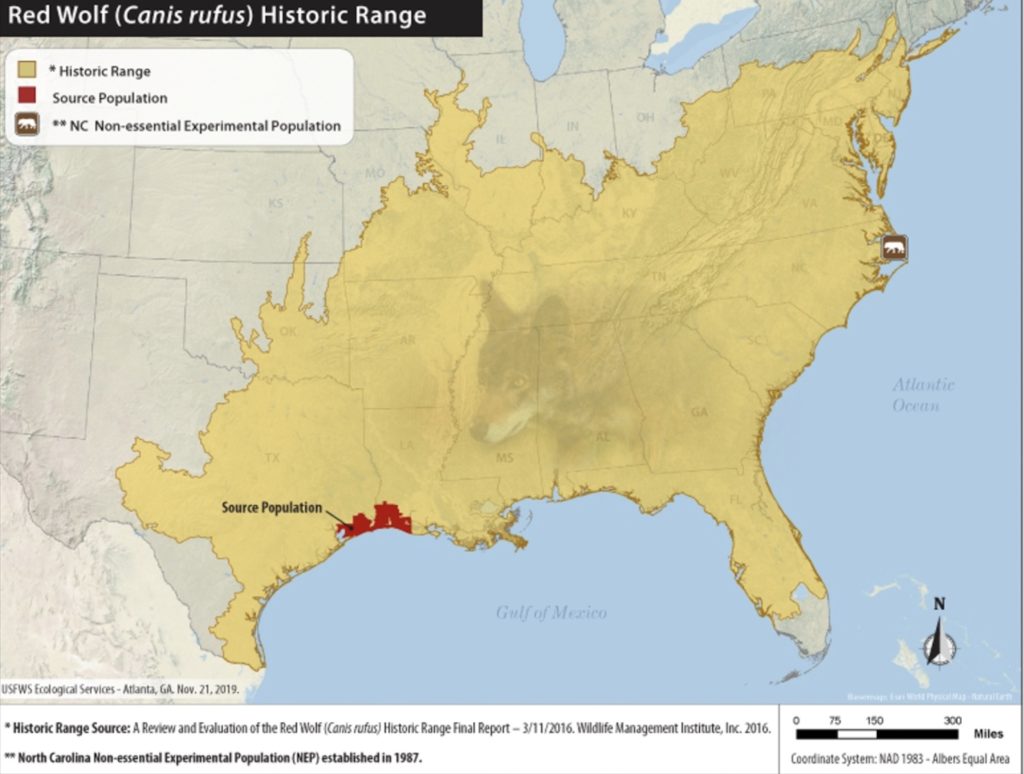
The historic and current range of the red wolf. Photo: Red Wolf Recovery Program/USFWS
Red wolves don’t eat people!

Mom, Dad & two pups. You have to look hard to see the second one! Photo: Victoria Ziglar/Endangered Wolf Center
So shouldn’t we all be afraid of red wolves? Remember Little Red Riding Hood & The Three Little Pigs? And the short & long answers are absolutely not. They are way more afraid of us than we are of them.
In the history of the world (and that is a very, very long time), how many human attacks or fatalities have there been from red wolves? Not one, ever!
And in 33 years of the red wolf recovery program, there have less than 15 livestock depredations, mainly consisting of chickens and barn cats. That is remarkable and reinforces our love of red wolves.
And why are wolves important?
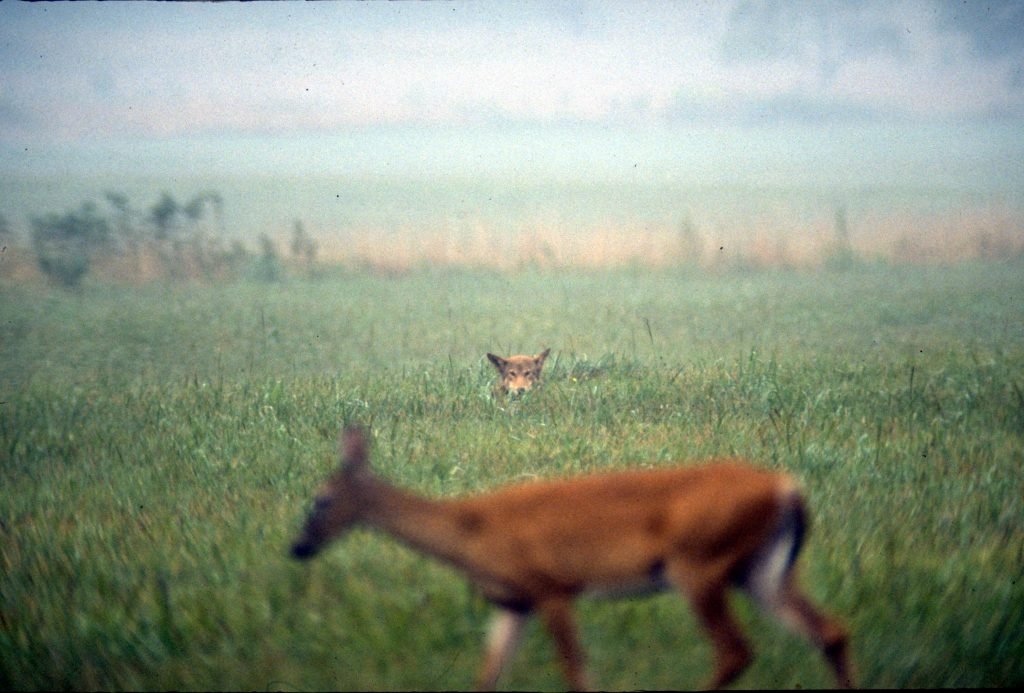
Red wolves help keep deer herds healthy. Photo: Wikipedia
We sometimes hear folks say the wolves are eating all the deer. And our response? Let’s talk.
Wildlands Network has been working on documenting the effect red wolves have on both deer & quail populations. And the results show both quail & deer numbers increase when wolves are on the landscape. Hmmm.
Why? Well, the wolves generally eat the sick & weak deer which helps keep the herds healthy. As for quail and songbirds, the wolves eat raccoons & opossums (and don’t get us wrong, we love these critters too) which feed on the bird eggs. The more eggs that hatch, the more birds.
Even native plants benefit from wolves. Since the wolves keep the deer moving, they don’t overgraze the plants. As a result, native plants have a chance to flourish which also keeps the invasive species at bay. A win/win.
We love endangered red wolves because…
0
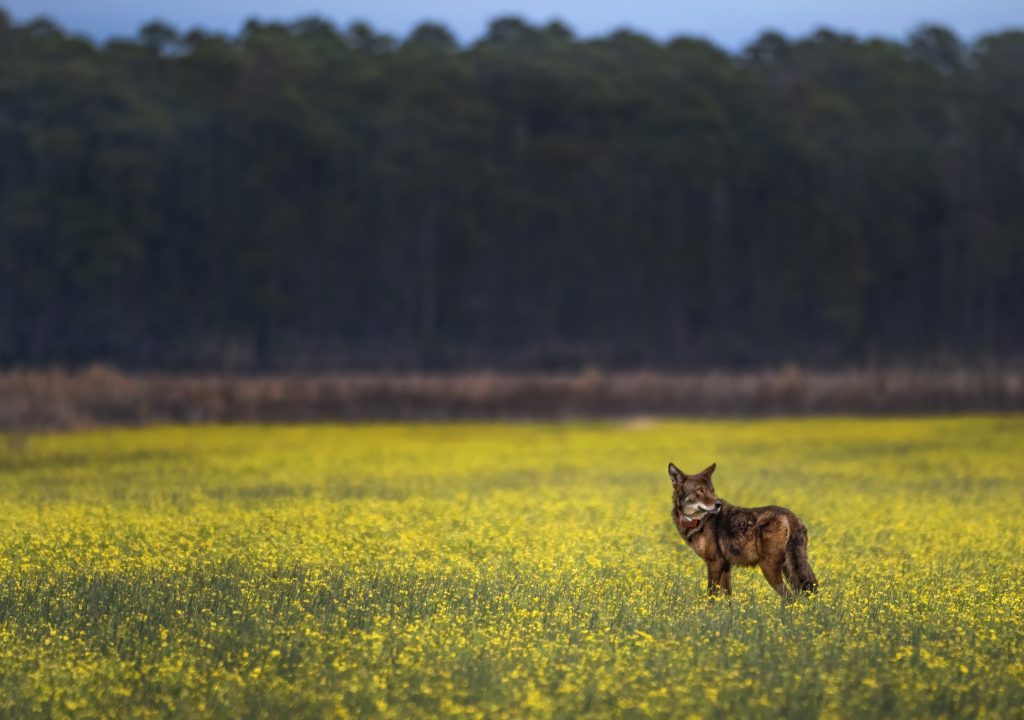
With less than 20 red wolves left in the wild, they need our help. Photo: Justin Grubb/Running Wild Media
So to recap, we love endangered red wolves because:
- They are the most endangered wild animal in America
- Mating for life, most of the time, makes them fairly unique in the mammal world
- They are excellent parents with both the male & female caring for their young
- Red wolves only have one litter of pups a year and they will melt your heart
- As the only wolf solely native to the US, they are an American treasure
- Never in the history of the world have they harmed or killed a human.
- Where red wolves live in the wild, other animals (including deer, raccoons, and quail) and native plants are healthier, keeping our ecosystem balanced.
To learn more and help
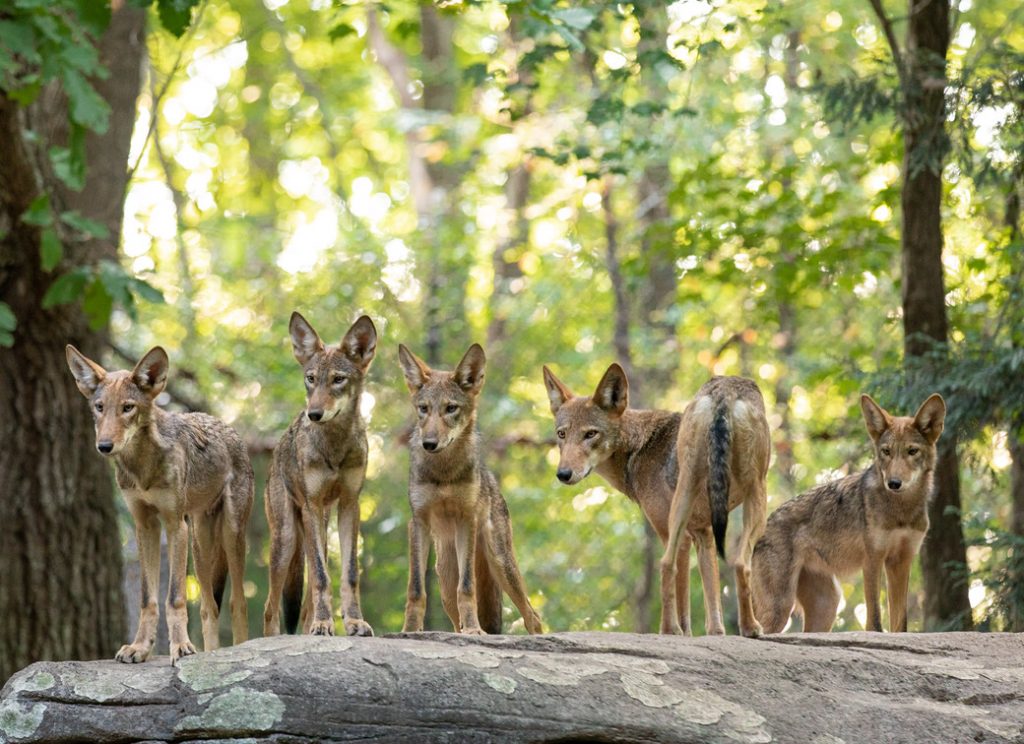
Red wolf siblings hanging out. Photo: NC Zoo
Check out our Red Wolves Are Amazing website section, including the latest blogs and fun facts. Learn all you can about America’s red wolf.
For free photos, films and videos to download, see our Red Wolf Gallery. Photographers, filmmakers & red wolf partner facilities have donated the use of their images to help you spread awareness of these magnificent animals. Share posts on social media or wherever anyone will listen.
And if you want to learn more, follow us on Facebook, and Instagram or signup for our newsletter.
